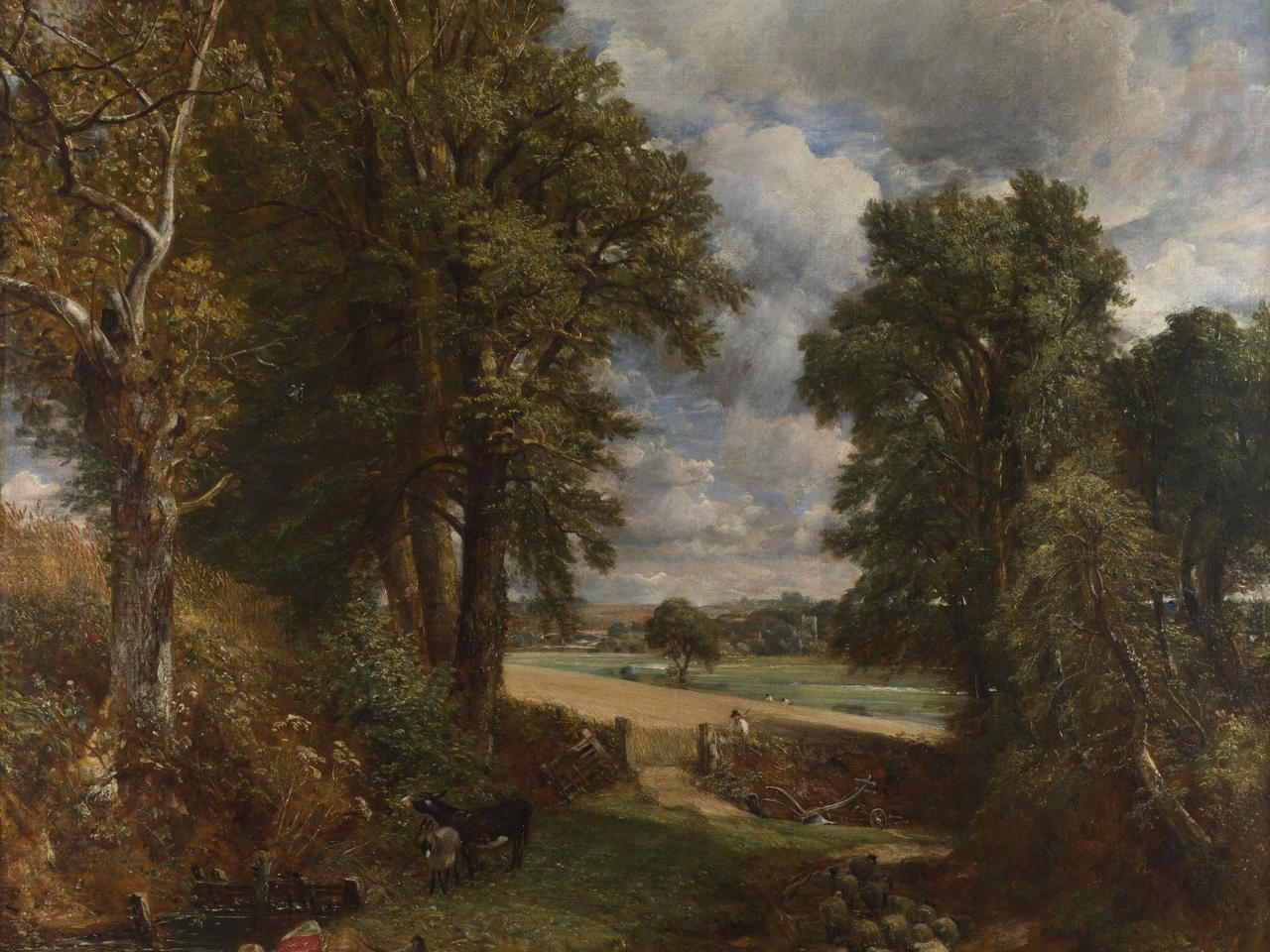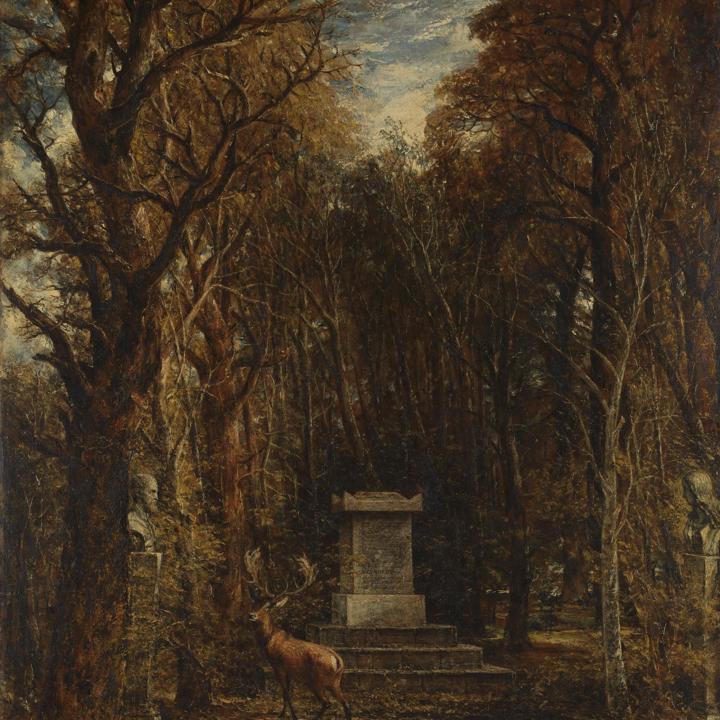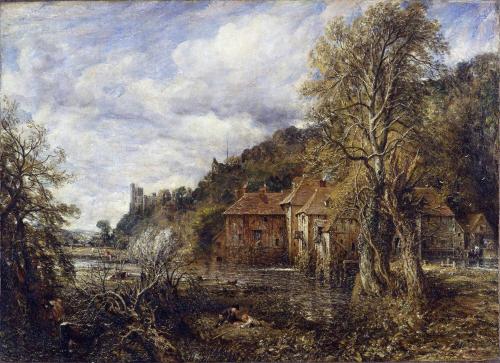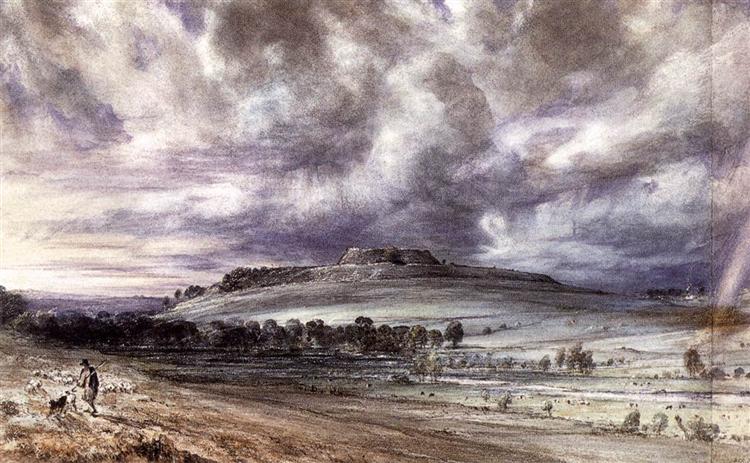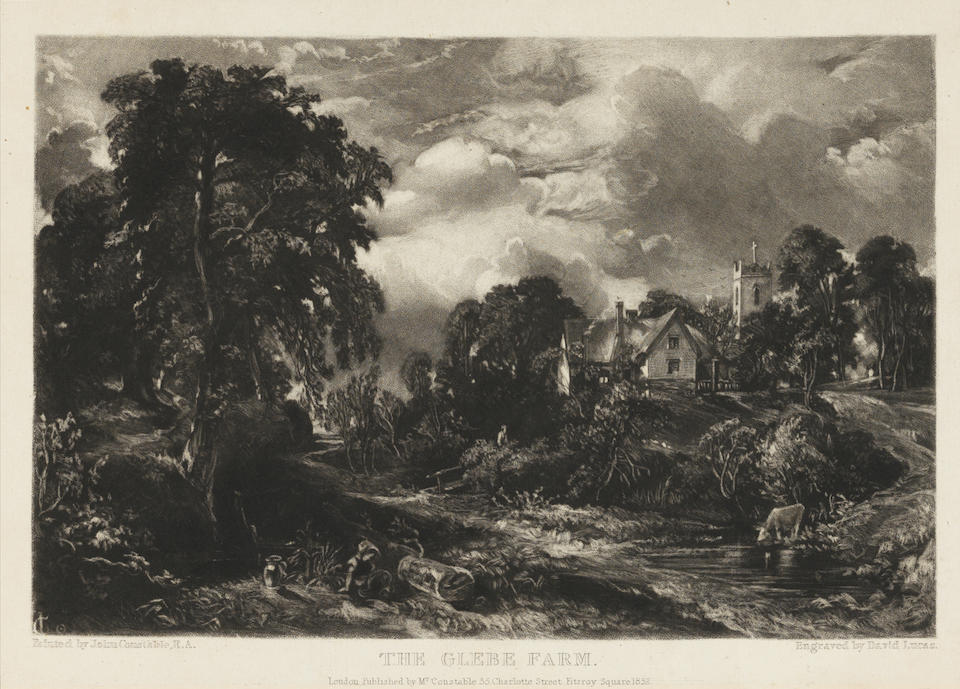The Royal Academy
30 October 2021 – 13 February 2022
The Royal Academy presents the first survey of the late work of John Constable (1776-1837). Late Constable will explore the last twelve years of the artist’s career, from 1825 until his unexpected death in 1837. Characterised by the expressive brushwork that came to define Constable’s late career, the exhibition brings together over 50 works including paintings and oil sketches as well as watercolours, drawings and prints, taking an in-depth look at the development of the artist’s late style.
Constable was born and raised in Dedham Vale, the valley of the River Stour in Suffolk. The son of a wealthy mill owner, he became a student at the Royal Academy Schools in 1800, aged 24 and was elected a Royal Academician in 1829, at the age of 53.
Late Constable is arranged in three sections. The first section, 1825-1829, starts with the last of Constable’s celebrated six-foot Suffolk ‘canal’ scenes, The Leaping Horse, 1825, one of the highlights of the Royal Academy’s collection. It is in this painting that, by adding the detail of the tower of Dedham Church, Constable first moved away from the notion of topographical accuracy, which had been a hallmark of his work until that date. In addition, this section includes all of Constable’s major exhibition pictures from the period, including
The Cornfield, 1825 (The National Gallery, London)
and Dedham Vale, 1828 (National Galleries of Scotland, Edinburgh),
as well as the artist’s Diploma Work, A Boat Passing a Lock, 1826, presented to the Royal Academy in 1829 upon his election as Royal Academician. These are shown together with various oil sketches, including Constable’s full-size preparatory sketches, which are remarkable in their expressive brushwork, such as
The Leaping Horse (full-size sketch), 1825 (Victoria and Albert Museum, London).
The second section, 1830-37, explores Constable’s work in the 1830s leading up to his last two exhibition pictures:
Cenotaph to the Memory of Sir Joshua Reynolds, 1833-36 (The National Gallery, London)
and Arundel Mill and Castle, 1837 (The Toledo Museum of Art). The latter was shown posthumously at the Royal Academy’s then new location in Trafalgar Square, prompting the critics to lament the great loss of that ‘able and very powerful artist’.
A third section, Works on Paper, features watercolours, drawings and prints. In his late career, Constable turned his attention to watercolour with an enthusiasm he had not shown for the medium since the early 1800s. Highlights includes his two exhibition watercolours,
Old Sarum, 1834 and, most famously,
Stonehenge, 1835 (both Victoria and Albert Museum, London).
In addition to Constable’s preparatory drawings and plein-air sketches, the section highlights some of his most evocative works on paper, such as his late drawing
View on the Stour, c. 1836 (Victoria and Albert Museum, London). It was also late in life that Constable explored the possibilities of printmaking in a series of mezzotints after his paintings
(English Landscape, published 1830-32), designed to promote his use of light and shade, which had become a powerful vehicle of expression in his late work. The close collaboration between Constable and his printmaker, David Lucas, is evident in the corrected progress proofs for the final print of the series,
Vignette: Hampstead Heath, 1829 (Fitzwilliam Museum, Cambridge).
The exhibition is organised by the Royal Academy of Arts, London. It is curated by Annie Lyles, former Curator at Tate Britain, and Per Rumberg, Curator at the Royal Academy of Arts.
The exhibition will be accompanied by a fully illustrated catalogue with essays by the curators and leading scholars in the field.
